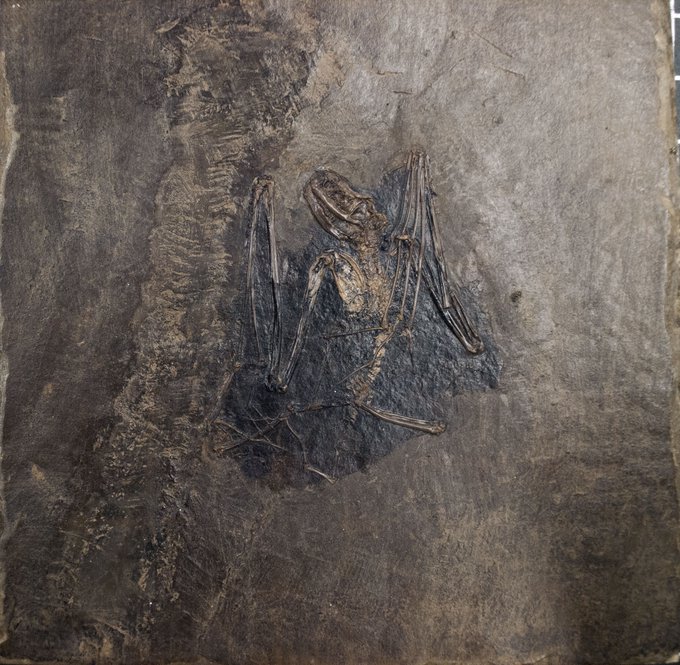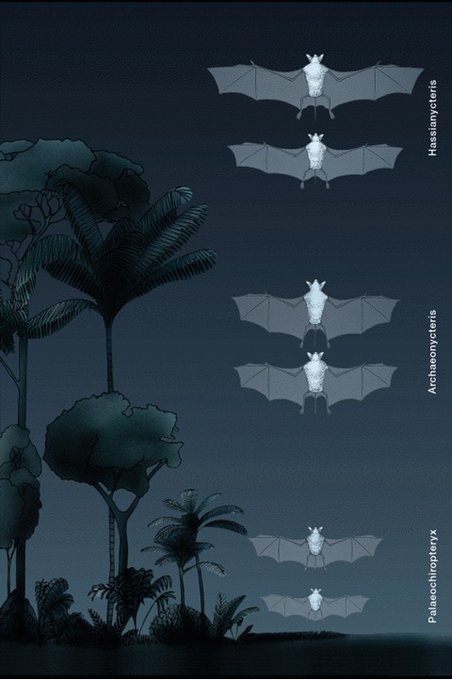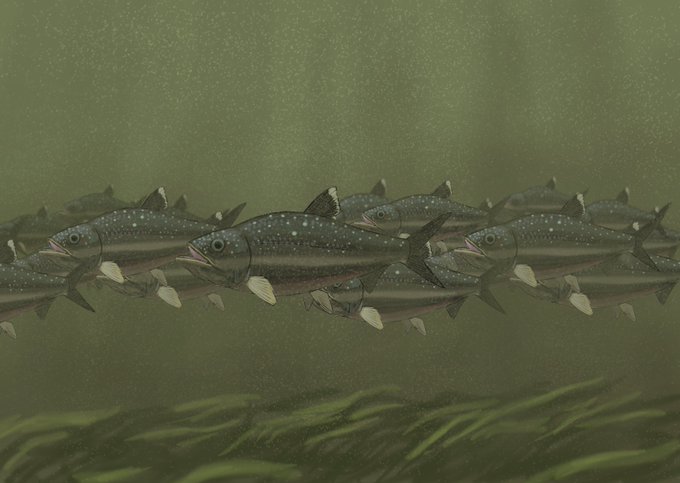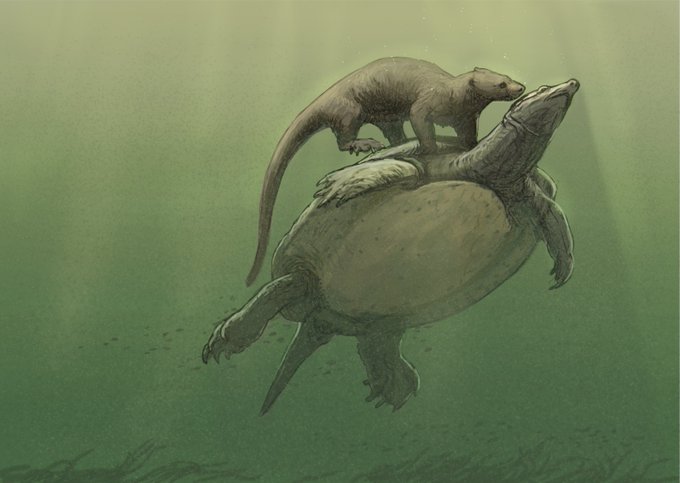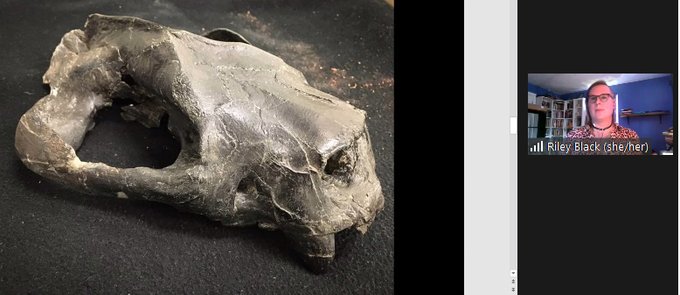eoceneのTwitterイラスト検索結果。 175 件中 4ページ目
My entry to the #AtlantisBestiary , aquatic fauna of the Pavlopetri formation a lagerstätte which gives us an insight into the diversity of live in the coastal ecosystems of Late Paleocene Atlantis and which species called these ancient coasts home:
Our latest #monograph is now available online! 'The #mammals of the Late Eocene – Early Oligocene Solent Group', by JJ Hooker. #palaeontology https://t.co/ruA1OQBERl
#Dinovember Day 26: Beasts of The Blue
The primitive whales of Late Eocene Egypt. A family of Basilosaurus cruise along near the surface, while a pair of smaller Dorudon swiftly pursue fish through the sunlit waters of the Tethys sea.
New design! Brontotheres were rhinoceros-like animals that lived about 56–34 million years ago (during the Eocene). They're related to rhinos, horses, and tapirs and came in a variety of shapes and sizes. Included in our latest Sticker Pack: https://t.co/5ib7tCDwcm
For the final #FossilFriday of #Arachtober - and given it's nearly halloween - let's meet a fossil parasite! This beautiful tick was preserved in Eocene (~44–49 million year old) amber, and was reconstructed in 3D by using high resolution CT. Fossil left, digital render right.
#80年代名曲ベスト100in2021
73位「Pleocene」
細野晴臣 1989年 122点
サントラ『銀河鉄道の夜』収録のインスト「プリオシン海岸」をベースに福澤もろとのデュエットに仕立てた幻想的な一曲。民族音楽とAmbient、New Age的なテイストを盛り込んだ『omni Sight Seeing』収録。
https://t.co/VGnoDUNHm8
Pastel Paleotober Day 9: Waimanu 💝
Waimanu of New Zealand lived in the Paleocene soon after KPG Extinction. Taking advantage of the empty nieches left by the disappearance of most large marine predators, Waimanu took to the sea full-time as one of the first true penguins.
@tmkeesey @PaleoceneComic My illustration of a “hunter” stylized in vague homage to Paleocene issue 1.
Pastel Paleotober Day 5: Titanoboa 🐍
Titanoboa evolved in the tropical forests of Colombia at the end of the Paleocene. At 13 meters, Titanoboa was the largest snake ever. Despite often being depicted eating crocodiles, its teeth suggest that it mainly ate fish.
Results from the #paleostream!
Knighta, Velafrons, Subcyclotosaurus and Palaeosinopa (on the back of an Axestemys)
#paleoart #fish #eocene #turtle #hadrosaur #cretaceous #sciart #temnospondyl #water #scicomm
From the paleozoic to the paleocene~ #Mammoths galore! I did notice that all elephants today have eyes with black sclera and dark ember iris. I thought that maybe mammoths could have somethings similar.
#digitalart #pixelart #oc #kietafriends
#sizetwitter #gijinka #moemorphism
Achaenodon robustus lived during the Eocene of North America, measured 2 metres & weighed up to 300kg.
(Credit WillemSvdMerwe)
THE CRONCH "CAT": DIET AND PALEOECOLOGY OF PATRIOFELIS ULTA. @Laelaps at #TetZooMCon 2021. Not a cat. With big teeth. Probably ate lots of turtles... a durophagore? #palaeoecology #paleoecology #fossils #Patriofelis #Eocene #palaeontology #paleontology #durophagore
Enjoying #TetZooMCon talks after a long and tiring week. @Laelaps' talk is introducing me to the enegmatic eocene not-cat Patriofelis, and Charles Knight's now outdated reconstruction I feel constitutes great paleomeme material.
#LagerstatteoftheWeek Eoconstrictor was an ancient boid snake that lived in the Eocene Messel Pit. Based on skull structure, it was one of the earliest known snakes with infrared vision.
https://t.co/bs5zpHKmud
#Fossils #FossilFriday #Paleontology
Archaeodromus anglicus potrait because funny finger guy has no idea how to ankylosaur :p
#paleoart
#eocene
#archaeodromus
#extinctbird
First image is a very well done illustration by @EmilianoTroco. Long ago in the ancient days of Pakistan, during the Middle Eocene Epoch, a female Maiacetus inuus, while doing her hunting has finally captured her next meal and will be returning to land shortly to feed her young















